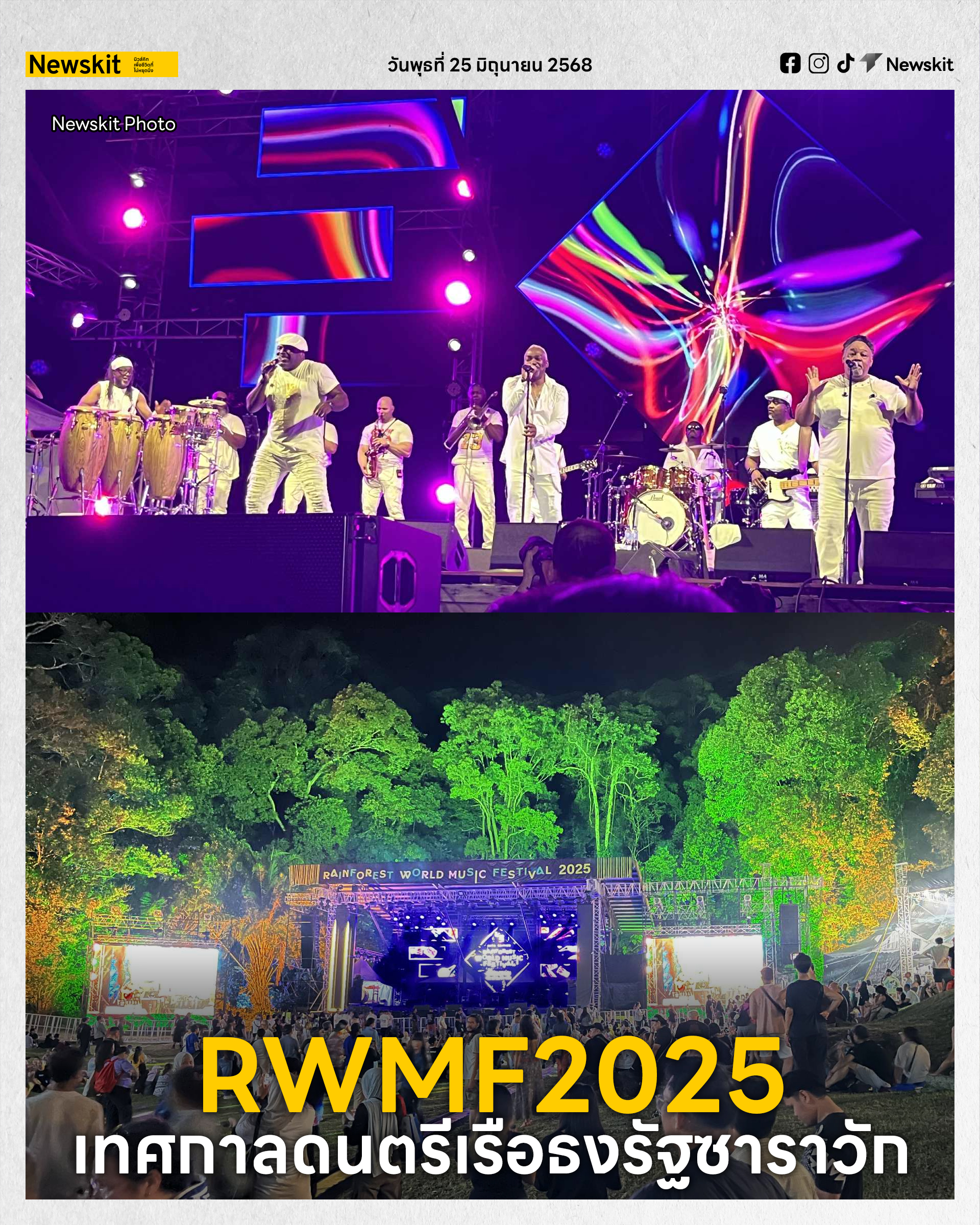S.E.S. และ “Dreams Come True” ที่ทำให้ผมรู้จัก K-POP เป็นครั้งแรก: ปฐมบทของวงการ K-POP
ในยุคที่เพลงป๊อปเกาหลียังไม่เป็นที่รู้จักในระดับโลก K-POP ได้เริ่มต้นก้าวแรกสู่การเป็นปรากฏการณ์วัฒนธรรมผ่านเกิร์ลกรุ๊ปอย่าง S.E.S. สำหรับผมแล้ว การได้ฟังเพลง “Dreams Come True” คือจุดเริ่มต้นที่ทำให้หลงรัก K-POP เป็นครั้งแรก มันไม่ใช่แค่เพลง แต่เป็นสัญลักษณ์ของความฝันที่กลายเป็นจริง และเป็นปฐมบทที่ปูทางให้อุตสาหกรรมบันเทิงเกาหลีใต้ก้าวสู่เวทีโลก S.E.S. ไม่เพียงเป็นไอดอลหญิงรุ่นบุกเบิก แต่ยังเป็นแรงบันดาลใจให้ศิลปินรุ่นหลัง และช่วยจุดประกายกระแส Hallyu (Korean Wave) ที่เรารู้จักกันดีในวันนี้ บทความนี้จะพาไปสำรวจประวัติ ความดัง ผลกระทบของ S.E.S. และเรื่องราวเบื้องหลังเพลงฮิตอย่าง “Dreams Come True” ที่ยังคงเป็นตำนาน
👩🏻🧒🏻👧🏻 S.E.S.: ผู้บุกเบิกเกิร์ลกรุ๊ปยุคแรกของ K-POP
S.E.S. (ย่อมาจาก Sea, Eugene, Shoo) เป็นเกิร์ลกรุ๊ปเกาหลีใต้จากค่าย SM Entertainment ที่เดบิวต์เมื่อปี 1997 สมาชิกทั้งสามคนคือ Bada (หรือ Sea), Eugene และ Shoo ซึ่งชื่อวงมาจากชื่อจริงของพวกเธอโดยตรง. ในยุคนั้น K-POP ยังอยู่ในช่วงตั้งไข่ และ S.E.S. ได้กลายเป็นหนึ่งในกลุ่มไอดอลหญิงกลุ่มแรกที่ได้รับความนิยมอย่างล้นหลาม ด้วยภาพลักษณ์น่ารักบริสุทธิ์แบบ “fairies” (원조 요정) ที่ดึงดูดแฟนวัยรุ่น และพัฒนาไปสู่สไตล์ที่ซับซ้อนมากขึ้นในภายหลัง ทำให้พวกเธอครองชาร์ตเพลงและกลายเป็นคู่แข่งหลักกับ Fin.K.L. ในสมัยนั้น
ความสำเร็จของ S.E.S. มาอย่างรวดเร็ว อัลบั้มเดบิวต์ I’m Your Girl ขายได้กว่า 650,000 ชุด ทำให้เป็นอัลบั้มเกิร์ลกรุ๊ปที่ขายดีอันดับ 3 ในเกาหลีใต้. อัลบั้มต่อ ๆ มาอย่าง Sea & Eugene & Shoo (ขายกว่า 650,000 ชุด), Love (กลายเป็นอัลบั้มเกิร์ลกรุ๊ปที่ขายดีอันดับ 2 ในขณะนั้น) และ A Letter from Greenland (ขายกว่า 635,000 ชุด) ยิ่งตอกย้ำความนิยม. เพลงฮิตที่ครองชาร์ตยาวนาน ได้แก่ “(‘Cause) I’m Your Girl”, “Dreams Come True” (ซึ่งขึ้นอันดับ 1 บน Music Bank 3 สัปดาห์ติด), “Love”, “Just in Love” และ “U”. เพลง “I’m Your Girl” ยังถูกยกให้เป็นหนึ่งใน 100 เพลงที่ดีที่สุดในประวัติศาสตร์ K-POP โดย Rolling Stone.
พวกเธอไม่ได้จำกัดอยู่แค่เกาหลีใต้ แต่ขยายตลาดไปญี่ปุ่นตั้งแต่ปี 1998 กับซิงเกิล “Meguriau Sekai” ที่ขึ้นชาร์ต Oricon อันดับ 37 และขายกว่า 13,000 ชุด รวมถึงอัลบั้ม Reach Out ที่ขึ้นอันดับ 50. นอกจากนี้ ยังขายอัลบั้มได้กว่า 200,000 ชุดในไต้หวัน ทำให้ได้รับแผ่นประกาศเกียรติคุณจาก Rock Records. S.E.S. จัดคอนเสิร์ตเดี่ยวครั้งแรกในปี 2000 ที่ Olympic Gymnastics Arena ขายหมดเกลี้ยงกว่า 9,000 ที่นั่ง. แม้ยุบวงในปี 2002 แต่พวกเธอ reunite ในปี 2007, 2008, 2009 และอย่างยิ่งใหญ่ในปี 2016-2017 ด้วยอัลบั้มพิเศษ Remember พร้อมคอนเสิร์ตและรายการเรียลลิตี้
รางวัลที่ได้รับมากมาย เช่น Rookie of the Year จาก Golden Disc Awards (1998), Best Female Group จาก MAMA (2001, 2002), และ Bonsang จากหลายเวทีอย่าง KBS Song Festival, KMTV Music Awards และ Seoul Music Awards. พวกเธอยังได้รับการยกย่องจากรัฐบาลเกาหลี เช่น Commendation จากกระทรวงวัฒนธรรม (1999) และ Appreciation Plaques จากสหภาพศิลปิน (2000). ในลิสต์ต่าง ๆ S.E.S. ติดอันดับ 4 ในศิลปินหญิงที่ดีที่สุดโดยผู้เชี่ยวชาญจาก The Dong-a Ilbo (2016) และอันดับ 80 ใน Legend 100 Artists จาก Mnet (2013).
ผลกระทบต่ออุตสาหกรรมบันเทิงเกาหลีใต้
S.E.S. ถือเป็นผู้บุกเบิกที่เปิดยุคเกิร์ลกรุ๊ปใน K-POP โดยถูกเรียกว่า “original fairies” และตั้งมาตรฐานให้กับภาพลักษณ์ไอดอลหญิงที่ได้รับการยอมรับทั้งในด้านเพลงและภาพลักษณ์. นักวิจารณ์อย่าง Kim Bong-hyun ยกย่องพวกเธอว่าเป็น “กลุ่มไอดอลแรกที่ภาพลักษณ์และเพลงได้รับการยอมรับ” ขณะที่ Kang Myeong-seok ชี้ว่าเพลงอย่าง “Love” และ “Be Natural” เป็น “ตำนานของเพลงเกิร์ลกรุ๊ป” พวกเธอมีอิทธิพลต่อรุ่นหลัง เช่น Red Velvet ที่ remake “Be Natural” ในปี 2014.
S.E.S. ช่วยยกระดับ SM Entertainment ให้เป็นค่ายยักษ์ใหญ่ และตั้งมาตรฐานการผลิต เช่น มิวสิกวิดีโอ “Love” ที่ถ่ายทำในนิวยอร์กด้วยงบ 1 พันล้านวอน ซึ่งเป็นการลงทุนสูงในยุคนั้น. พวกเธอยังมีส่วนในจุดเริ่มต้นของ Hallyu โดยขยาย K-POP ไปยังญี่ปุ่น ไต้หวัน และตลาดเอเชีย ซึ่งปูทางให้ศิลปินรุ่นหลังอย่าง BoA และ TVXQ. โดยรวมแล้ว S.E.S. ไม่เพียงทำให้เกิร์ลกรุ๊ปกลายเป็นส่วนสำคัญของอุตสาหกรรม แต่ยังช่วยให้ K-POP พัฒนาจากเพลงท้องถิ่นสู่ปรากฏการณ์ระดับโลกในเวลาต่อมา
“Dreams Come True”: เพลงที่จุดประกายความฝันและ K-POP
เพลง “Dreams Come True” ของ S.E.S. คือซิงเกิลที่สองจากอัลบั้มชุดที่สอง Sea & Eugene & Shoo ที่ออกเมื่อปี 1998 มันเป็นเพลงที่ทำให้ผมรู้จัก K-POP เป็นครั้งแรก ด้วยจังหวะ dance-pop ที่สดใสและเนื้อเพลงที่เต็มเปี่ยมไปด้วยความหวัง เพลงนี้ไม่ได้เกิดขึ้นจากศูนย์ แต่เป็น cover จากเพลงฟินแลนด์ชื่อ “Rakastuin mä looseriin” (หรือ “Like a Fool”) ของวง Nylon Beat ที่ออกในปี 1996 ประพันธ์โดย Risto Asikainen และ Jukka Immonen. ค่าย SM ซื้อลิขสิทธิ์มาปรับให้เข้ากับตลาดเกาหลี โดย Yoo Young-jin ช่วยแต่งเพิ่ม และ Bada ร่วมเขียนเนื้อเพลงภาษาเกาหลี ทำให้เวอร์ชันนี้มีส่วนผสมใหม่ ๆ เช่น เสียงเติมและส่วน arrange เพิ่มในช่วงท้าย แต่ยังคงโครงสร้างดนตรีหลักไว้ เพลงถูกบันทึกที่ SM Digital Recording Studio ในโซล และปล่อยอย่างเป็นทางการเมื่อ 23 พฤศจิกายน 1998
มิวสิกวิดีโอถ่ายทำในนิวยอร์กและฮาวาย เน้นภาพลักษณ์น่ารัก fairy-like และในปี 2021 ถูก remaster ใหม่ให้คมชัดขึ้น. ความหมายของเนื้อเพลงพูดถึงความฝันที่กลายเป็นจริงแบบไม่คาดคิด เปรียบเทียบกับความรู้สึกตกหลุมรักที่ทำให้ชีวิตสดใสขึ้น สะท้อนถึงความมองโลกในแง่ดีและความตื่นเต้น ต่างจากต้นฉบับฟินแลนด์ที่พูดถึงการตกหลุมรักคนไม่เอาไหน แต่เวอร์ชัน S.E.S. ปรับให้ positive มากขึ้น. ลิริคอย่าง “Dreams come true, yes, they do” ย้ำว่าฝันเป็นจริงได้ถ้าเราเชื่อมั่น
เพลงนี้ดังเปรี้ยงปร้าง ขึ้นอันดับ 1 ในรายการเพลงเกาหลีหลายรายการ เช่น Music Bank (ชนะ 3 สัปดาห์), Inkigayo และ Music Camp ในปี 1998-1999 ช่วยให้อัลบั้มขายดี และเป็นส่วนหนึ่งที่ทำให้ S.E.S. ประสบความสำเร็จ. ในปี 2021 เพลงนี้ติดอันดับ 86 ในลิสต์ 100 เพลง K-POP ที่ดีที่สุดตลอดกาลโดย Melon และ Seoul Shinmun. มันยังถูก remake หลายครั้ง เช่น โดย aespa ในปี 2021 ซึ่งเพิ่ม element trap-hip hop และชาร์ตดีทั้งในเกาหลีและต่างประเทศ รวมถึง cover จาก Girls’ Generation, Red Velvet, Twice และอื่น ๆ.
Legacy ที่ยังคงอยู่: จากปฐมบทสู่ปรากฏการณ์โลก
กาลเวลาผ่านไปกว่า 28 ปี แต่ legacy ของ S.E.S. และ “Dreams Come True” ยังคงถูกพูดถึงในฐานะตำนานที่เปลี่ยนโฉมอุตสาหกรรมบันเทิงเกาหลีใต้ เพลงนี้ไม่ใช่แค่เพลงฮิต แต่เป็นสัญลักษณ์ของ K-POP ยุคแรกที่ผสมผสานวัฒนธรรมต่างชาติเข้ากับสไตล์เกาหลีได้อย่างลงตัว สำหรับผม มันคือจุดเริ่มต้นที่ทำให้รู้จัก K-POP จนถึงทุกวันนี้ S.E.S. พิสูจน์ว่าความฝันสามารถเป็นจริงได้ และพวกเธอคือปฐมบทที่ทำให้ K-POP เติบโตเป็นอุตสาหกรรมพันล้านดอลลาร์ในปัจจุบัน ถ้าคุณยังไม่เคยฟัง ลองเปิด “Dreams Come True” แล้วคุณจะเข้าใจว่าทำไมมันถึงพิเศษ
#ลุงเล่าหลานฟัง
https://www.youtube.com/watch?v=8uiR4SrDGZk
ในยุคที่เพลงป๊อปเกาหลียังไม่เป็นที่รู้จักในระดับโลก K-POP ได้เริ่มต้นก้าวแรกสู่การเป็นปรากฏการณ์วัฒนธรรมผ่านเกิร์ลกรุ๊ปอย่าง S.E.S. สำหรับผมแล้ว การได้ฟังเพลง “Dreams Come True” คือจุดเริ่มต้นที่ทำให้หลงรัก K-POP เป็นครั้งแรก มันไม่ใช่แค่เพลง แต่เป็นสัญลักษณ์ของความฝันที่กลายเป็นจริง และเป็นปฐมบทที่ปูทางให้อุตสาหกรรมบันเทิงเกาหลีใต้ก้าวสู่เวทีโลก S.E.S. ไม่เพียงเป็นไอดอลหญิงรุ่นบุกเบิก แต่ยังเป็นแรงบันดาลใจให้ศิลปินรุ่นหลัง และช่วยจุดประกายกระแส Hallyu (Korean Wave) ที่เรารู้จักกันดีในวันนี้ บทความนี้จะพาไปสำรวจประวัติ ความดัง ผลกระทบของ S.E.S. และเรื่องราวเบื้องหลังเพลงฮิตอย่าง “Dreams Come True” ที่ยังคงเป็นตำนาน
👩🏻🧒🏻👧🏻 S.E.S.: ผู้บุกเบิกเกิร์ลกรุ๊ปยุคแรกของ K-POP
S.E.S. (ย่อมาจาก Sea, Eugene, Shoo) เป็นเกิร์ลกรุ๊ปเกาหลีใต้จากค่าย SM Entertainment ที่เดบิวต์เมื่อปี 1997 สมาชิกทั้งสามคนคือ Bada (หรือ Sea), Eugene และ Shoo ซึ่งชื่อวงมาจากชื่อจริงของพวกเธอโดยตรง. ในยุคนั้น K-POP ยังอยู่ในช่วงตั้งไข่ และ S.E.S. ได้กลายเป็นหนึ่งในกลุ่มไอดอลหญิงกลุ่มแรกที่ได้รับความนิยมอย่างล้นหลาม ด้วยภาพลักษณ์น่ารักบริสุทธิ์แบบ “fairies” (원조 요정) ที่ดึงดูดแฟนวัยรุ่น และพัฒนาไปสู่สไตล์ที่ซับซ้อนมากขึ้นในภายหลัง ทำให้พวกเธอครองชาร์ตเพลงและกลายเป็นคู่แข่งหลักกับ Fin.K.L. ในสมัยนั้น
ความสำเร็จของ S.E.S. มาอย่างรวดเร็ว อัลบั้มเดบิวต์ I’m Your Girl ขายได้กว่า 650,000 ชุด ทำให้เป็นอัลบั้มเกิร์ลกรุ๊ปที่ขายดีอันดับ 3 ในเกาหลีใต้. อัลบั้มต่อ ๆ มาอย่าง Sea & Eugene & Shoo (ขายกว่า 650,000 ชุด), Love (กลายเป็นอัลบั้มเกิร์ลกรุ๊ปที่ขายดีอันดับ 2 ในขณะนั้น) และ A Letter from Greenland (ขายกว่า 635,000 ชุด) ยิ่งตอกย้ำความนิยม. เพลงฮิตที่ครองชาร์ตยาวนาน ได้แก่ “(‘Cause) I’m Your Girl”, “Dreams Come True” (ซึ่งขึ้นอันดับ 1 บน Music Bank 3 สัปดาห์ติด), “Love”, “Just in Love” และ “U”. เพลง “I’m Your Girl” ยังถูกยกให้เป็นหนึ่งใน 100 เพลงที่ดีที่สุดในประวัติศาสตร์ K-POP โดย Rolling Stone.
พวกเธอไม่ได้จำกัดอยู่แค่เกาหลีใต้ แต่ขยายตลาดไปญี่ปุ่นตั้งแต่ปี 1998 กับซิงเกิล “Meguriau Sekai” ที่ขึ้นชาร์ต Oricon อันดับ 37 และขายกว่า 13,000 ชุด รวมถึงอัลบั้ม Reach Out ที่ขึ้นอันดับ 50. นอกจากนี้ ยังขายอัลบั้มได้กว่า 200,000 ชุดในไต้หวัน ทำให้ได้รับแผ่นประกาศเกียรติคุณจาก Rock Records. S.E.S. จัดคอนเสิร์ตเดี่ยวครั้งแรกในปี 2000 ที่ Olympic Gymnastics Arena ขายหมดเกลี้ยงกว่า 9,000 ที่นั่ง. แม้ยุบวงในปี 2002 แต่พวกเธอ reunite ในปี 2007, 2008, 2009 และอย่างยิ่งใหญ่ในปี 2016-2017 ด้วยอัลบั้มพิเศษ Remember พร้อมคอนเสิร์ตและรายการเรียลลิตี้
รางวัลที่ได้รับมากมาย เช่น Rookie of the Year จาก Golden Disc Awards (1998), Best Female Group จาก MAMA (2001, 2002), และ Bonsang จากหลายเวทีอย่าง KBS Song Festival, KMTV Music Awards และ Seoul Music Awards. พวกเธอยังได้รับการยกย่องจากรัฐบาลเกาหลี เช่น Commendation จากกระทรวงวัฒนธรรม (1999) และ Appreciation Plaques จากสหภาพศิลปิน (2000). ในลิสต์ต่าง ๆ S.E.S. ติดอันดับ 4 ในศิลปินหญิงที่ดีที่สุดโดยผู้เชี่ยวชาญจาก The Dong-a Ilbo (2016) และอันดับ 80 ใน Legend 100 Artists จาก Mnet (2013).
ผลกระทบต่ออุตสาหกรรมบันเทิงเกาหลีใต้
S.E.S. ถือเป็นผู้บุกเบิกที่เปิดยุคเกิร์ลกรุ๊ปใน K-POP โดยถูกเรียกว่า “original fairies” และตั้งมาตรฐานให้กับภาพลักษณ์ไอดอลหญิงที่ได้รับการยอมรับทั้งในด้านเพลงและภาพลักษณ์. นักวิจารณ์อย่าง Kim Bong-hyun ยกย่องพวกเธอว่าเป็น “กลุ่มไอดอลแรกที่ภาพลักษณ์และเพลงได้รับการยอมรับ” ขณะที่ Kang Myeong-seok ชี้ว่าเพลงอย่าง “Love” และ “Be Natural” เป็น “ตำนานของเพลงเกิร์ลกรุ๊ป” พวกเธอมีอิทธิพลต่อรุ่นหลัง เช่น Red Velvet ที่ remake “Be Natural” ในปี 2014.
S.E.S. ช่วยยกระดับ SM Entertainment ให้เป็นค่ายยักษ์ใหญ่ และตั้งมาตรฐานการผลิต เช่น มิวสิกวิดีโอ “Love” ที่ถ่ายทำในนิวยอร์กด้วยงบ 1 พันล้านวอน ซึ่งเป็นการลงทุนสูงในยุคนั้น. พวกเธอยังมีส่วนในจุดเริ่มต้นของ Hallyu โดยขยาย K-POP ไปยังญี่ปุ่น ไต้หวัน และตลาดเอเชีย ซึ่งปูทางให้ศิลปินรุ่นหลังอย่าง BoA และ TVXQ. โดยรวมแล้ว S.E.S. ไม่เพียงทำให้เกิร์ลกรุ๊ปกลายเป็นส่วนสำคัญของอุตสาหกรรม แต่ยังช่วยให้ K-POP พัฒนาจากเพลงท้องถิ่นสู่ปรากฏการณ์ระดับโลกในเวลาต่อมา
“Dreams Come True”: เพลงที่จุดประกายความฝันและ K-POP
เพลง “Dreams Come True” ของ S.E.S. คือซิงเกิลที่สองจากอัลบั้มชุดที่สอง Sea & Eugene & Shoo ที่ออกเมื่อปี 1998 มันเป็นเพลงที่ทำให้ผมรู้จัก K-POP เป็นครั้งแรก ด้วยจังหวะ dance-pop ที่สดใสและเนื้อเพลงที่เต็มเปี่ยมไปด้วยความหวัง เพลงนี้ไม่ได้เกิดขึ้นจากศูนย์ แต่เป็น cover จากเพลงฟินแลนด์ชื่อ “Rakastuin mä looseriin” (หรือ “Like a Fool”) ของวง Nylon Beat ที่ออกในปี 1996 ประพันธ์โดย Risto Asikainen และ Jukka Immonen. ค่าย SM ซื้อลิขสิทธิ์มาปรับให้เข้ากับตลาดเกาหลี โดย Yoo Young-jin ช่วยแต่งเพิ่ม และ Bada ร่วมเขียนเนื้อเพลงภาษาเกาหลี ทำให้เวอร์ชันนี้มีส่วนผสมใหม่ ๆ เช่น เสียงเติมและส่วน arrange เพิ่มในช่วงท้าย แต่ยังคงโครงสร้างดนตรีหลักไว้ เพลงถูกบันทึกที่ SM Digital Recording Studio ในโซล และปล่อยอย่างเป็นทางการเมื่อ 23 พฤศจิกายน 1998
มิวสิกวิดีโอถ่ายทำในนิวยอร์กและฮาวาย เน้นภาพลักษณ์น่ารัก fairy-like และในปี 2021 ถูก remaster ใหม่ให้คมชัดขึ้น. ความหมายของเนื้อเพลงพูดถึงความฝันที่กลายเป็นจริงแบบไม่คาดคิด เปรียบเทียบกับความรู้สึกตกหลุมรักที่ทำให้ชีวิตสดใสขึ้น สะท้อนถึงความมองโลกในแง่ดีและความตื่นเต้น ต่างจากต้นฉบับฟินแลนด์ที่พูดถึงการตกหลุมรักคนไม่เอาไหน แต่เวอร์ชัน S.E.S. ปรับให้ positive มากขึ้น. ลิริคอย่าง “Dreams come true, yes, they do” ย้ำว่าฝันเป็นจริงได้ถ้าเราเชื่อมั่น
เพลงนี้ดังเปรี้ยงปร้าง ขึ้นอันดับ 1 ในรายการเพลงเกาหลีหลายรายการ เช่น Music Bank (ชนะ 3 สัปดาห์), Inkigayo และ Music Camp ในปี 1998-1999 ช่วยให้อัลบั้มขายดี และเป็นส่วนหนึ่งที่ทำให้ S.E.S. ประสบความสำเร็จ. ในปี 2021 เพลงนี้ติดอันดับ 86 ในลิสต์ 100 เพลง K-POP ที่ดีที่สุดตลอดกาลโดย Melon และ Seoul Shinmun. มันยังถูก remake หลายครั้ง เช่น โดย aespa ในปี 2021 ซึ่งเพิ่ม element trap-hip hop และชาร์ตดีทั้งในเกาหลีและต่างประเทศ รวมถึง cover จาก Girls’ Generation, Red Velvet, Twice และอื่น ๆ.
Legacy ที่ยังคงอยู่: จากปฐมบทสู่ปรากฏการณ์โลก
กาลเวลาผ่านไปกว่า 28 ปี แต่ legacy ของ S.E.S. และ “Dreams Come True” ยังคงถูกพูดถึงในฐานะตำนานที่เปลี่ยนโฉมอุตสาหกรรมบันเทิงเกาหลีใต้ เพลงนี้ไม่ใช่แค่เพลงฮิต แต่เป็นสัญลักษณ์ของ K-POP ยุคแรกที่ผสมผสานวัฒนธรรมต่างชาติเข้ากับสไตล์เกาหลีได้อย่างลงตัว สำหรับผม มันคือจุดเริ่มต้นที่ทำให้รู้จัก K-POP จนถึงทุกวันนี้ S.E.S. พิสูจน์ว่าความฝันสามารถเป็นจริงได้ และพวกเธอคือปฐมบทที่ทำให้ K-POP เติบโตเป็นอุตสาหกรรมพันล้านดอลลาร์ในปัจจุบัน ถ้าคุณยังไม่เคยฟัง ลองเปิด “Dreams Come True” แล้วคุณจะเข้าใจว่าทำไมมันถึงพิเศษ
#ลุงเล่าหลานฟัง
https://www.youtube.com/watch?v=8uiR4SrDGZk
🚩💿 S.E.S. และ “Dreams Come True” ที่ทำให้ผมรู้จัก K-POP เป็นครั้งแรก: ปฐมบทของวงการ K-POP
⌛ ในยุคที่เพลงป๊อปเกาหลียังไม่เป็นที่รู้จักในระดับโลก K-POP ได้เริ่มต้นก้าวแรกสู่การเป็นปรากฏการณ์วัฒนธรรมผ่านเกิร์ลกรุ๊ปอย่าง S.E.S. สำหรับผมแล้ว การได้ฟังเพลง “Dreams Come True” คือจุดเริ่มต้นที่ทำให้หลงรัก K-POP เป็นครั้งแรก มันไม่ใช่แค่เพลง แต่เป็นสัญลักษณ์ของความฝันที่กลายเป็นจริง และเป็นปฐมบทที่ปูทางให้อุตสาหกรรมบันเทิงเกาหลีใต้ก้าวสู่เวทีโลก S.E.S. ไม่เพียงเป็นไอดอลหญิงรุ่นบุกเบิก แต่ยังเป็นแรงบันดาลใจให้ศิลปินรุ่นหลัง และช่วยจุดประกายกระแส Hallyu (Korean Wave) ที่เรารู้จักกันดีในวันนี้ บทความนี้จะพาไปสำรวจประวัติ ความดัง ผลกระทบของ S.E.S. และเรื่องราวเบื้องหลังเพลงฮิตอย่าง “Dreams Come True” ที่ยังคงเป็นตำนาน
👩👧👦👩🏻🧒🏻👧🏻 S.E.S.: ผู้บุกเบิกเกิร์ลกรุ๊ปยุคแรกของ K-POP
S.E.S. (ย่อมาจาก Sea, Eugene, Shoo) เป็นเกิร์ลกรุ๊ปเกาหลีใต้จากค่าย SM Entertainment ที่เดบิวต์เมื่อปี 1997 สมาชิกทั้งสามคนคือ Bada (หรือ Sea), Eugene และ Shoo ซึ่งชื่อวงมาจากชื่อจริงของพวกเธอโดยตรง. ในยุคนั้น K-POP ยังอยู่ในช่วงตั้งไข่ และ S.E.S. ได้กลายเป็นหนึ่งในกลุ่มไอดอลหญิงกลุ่มแรกที่ได้รับความนิยมอย่างล้นหลาม ด้วยภาพลักษณ์น่ารักบริสุทธิ์แบบ “fairies” (원조 요정) ที่ดึงดูดแฟนวัยรุ่น และพัฒนาไปสู่สไตล์ที่ซับซ้อนมากขึ้นในภายหลัง ทำให้พวกเธอครองชาร์ตเพลงและกลายเป็นคู่แข่งหลักกับ Fin.K.L. ในสมัยนั้น
ความสำเร็จของ S.E.S. มาอย่างรวดเร็ว อัลบั้มเดบิวต์ I’m Your Girl ขายได้กว่า 650,000 ชุด ทำให้เป็นอัลบั้มเกิร์ลกรุ๊ปที่ขายดีอันดับ 3 ในเกาหลีใต้. อัลบั้มต่อ ๆ มาอย่าง Sea & Eugene & Shoo (ขายกว่า 650,000 ชุด), Love (กลายเป็นอัลบั้มเกิร์ลกรุ๊ปที่ขายดีอันดับ 2 ในขณะนั้น) และ A Letter from Greenland (ขายกว่า 635,000 ชุด) ยิ่งตอกย้ำความนิยม. เพลงฮิตที่ครองชาร์ตยาวนาน ได้แก่ “(‘Cause) I’m Your Girl”, “Dreams Come True” (ซึ่งขึ้นอันดับ 1 บน Music Bank 3 สัปดาห์ติด), “Love”, “Just in Love” และ “U”. เพลง “I’m Your Girl” ยังถูกยกให้เป็นหนึ่งใน 100 เพลงที่ดีที่สุดในประวัติศาสตร์ K-POP โดย Rolling Stone.
🌏 พวกเธอไม่ได้จำกัดอยู่แค่เกาหลีใต้ แต่ขยายตลาดไปญี่ปุ่นตั้งแต่ปี 1998 กับซิงเกิล “Meguriau Sekai” ที่ขึ้นชาร์ต Oricon อันดับ 37 และขายกว่า 13,000 ชุด รวมถึงอัลบั้ม Reach Out ที่ขึ้นอันดับ 50. นอกจากนี้ ยังขายอัลบั้มได้กว่า 200,000 ชุดในไต้หวัน ทำให้ได้รับแผ่นประกาศเกียรติคุณจาก Rock Records. S.E.S. จัดคอนเสิร์ตเดี่ยวครั้งแรกในปี 2000 ที่ Olympic Gymnastics Arena ขายหมดเกลี้ยงกว่า 9,000 ที่นั่ง. แม้ยุบวงในปี 2002 แต่พวกเธอ reunite ในปี 2007, 2008, 2009 และอย่างยิ่งใหญ่ในปี 2016-2017 ด้วยอัลบั้มพิเศษ Remember พร้อมคอนเสิร์ตและรายการเรียลลิตี้
🥇🏆 รางวัลที่ได้รับมากมาย เช่น Rookie of the Year จาก Golden Disc Awards (1998), Best Female Group จาก MAMA (2001, 2002), และ Bonsang จากหลายเวทีอย่าง KBS Song Festival, KMTV Music Awards และ Seoul Music Awards. พวกเธอยังได้รับการยกย่องจากรัฐบาลเกาหลี เช่น Commendation จากกระทรวงวัฒนธรรม (1999) และ Appreciation Plaques จากสหภาพศิลปิน (2000). ในลิสต์ต่าง ๆ S.E.S. ติดอันดับ 4 ในศิลปินหญิงที่ดีที่สุดโดยผู้เชี่ยวชาญจาก The Dong-a Ilbo (2016) และอันดับ 80 ใน Legend 100 Artists จาก Mnet (2013).
⏯️ ผลกระทบต่ออุตสาหกรรมบันเทิงเกาหลีใต้ 🏁
S.E.S. ถือเป็นผู้บุกเบิกที่เปิดยุคเกิร์ลกรุ๊ปใน K-POP โดยถูกเรียกว่า “original fairies” และตั้งมาตรฐานให้กับภาพลักษณ์ไอดอลหญิงที่ได้รับการยอมรับทั้งในด้านเพลงและภาพลักษณ์. นักวิจารณ์อย่าง Kim Bong-hyun ยกย่องพวกเธอว่าเป็น “กลุ่มไอดอลแรกที่ภาพลักษณ์และเพลงได้รับการยอมรับ” ขณะที่ Kang Myeong-seok ชี้ว่าเพลงอย่าง “Love” และ “Be Natural” เป็น “ตำนานของเพลงเกิร์ลกรุ๊ป” พวกเธอมีอิทธิพลต่อรุ่นหลัง เช่น Red Velvet ที่ remake “Be Natural” ในปี 2014.
S.E.S. ช่วยยกระดับ SM Entertainment ให้เป็นค่ายยักษ์ใหญ่ และตั้งมาตรฐานการผลิต เช่น มิวสิกวิดีโอ “Love” ที่ถ่ายทำในนิวยอร์กด้วยงบ 1 พันล้านวอน ซึ่งเป็นการลงทุนสูงในยุคนั้น. พวกเธอยังมีส่วนในจุดเริ่มต้นของ Hallyu โดยขยาย K-POP ไปยังญี่ปุ่น ไต้หวัน และตลาดเอเชีย ซึ่งปูทางให้ศิลปินรุ่นหลังอย่าง BoA และ TVXQ. โดยรวมแล้ว S.E.S. ไม่เพียงทำให้เกิร์ลกรุ๊ปกลายเป็นส่วนสำคัญของอุตสาหกรรม แต่ยังช่วยให้ K-POP พัฒนาจากเพลงท้องถิ่นสู่ปรากฏการณ์ระดับโลกในเวลาต่อมา
🎶🎶 “Dreams Come True”: เพลงที่จุดประกายความฝันและ K-POP
เพลง “Dreams Come True” ของ S.E.S. คือซิงเกิลที่สองจากอัลบั้มชุดที่สอง Sea & Eugene & Shoo ที่ออกเมื่อปี 1998 มันเป็นเพลงที่ทำให้ผมรู้จัก K-POP เป็นครั้งแรก ด้วยจังหวะ dance-pop ที่สดใสและเนื้อเพลงที่เต็มเปี่ยมไปด้วยความหวัง เพลงนี้ไม่ได้เกิดขึ้นจากศูนย์ แต่เป็น cover จากเพลงฟินแลนด์ชื่อ “Rakastuin mä looseriin” (หรือ “Like a Fool”) ของวง Nylon Beat ที่ออกในปี 1996 ประพันธ์โดย Risto Asikainen และ Jukka Immonen. ค่าย SM ซื้อลิขสิทธิ์มาปรับให้เข้ากับตลาดเกาหลี โดย Yoo Young-jin ช่วยแต่งเพิ่ม และ Bada ร่วมเขียนเนื้อเพลงภาษาเกาหลี ทำให้เวอร์ชันนี้มีส่วนผสมใหม่ ๆ เช่น เสียงเติมและส่วน arrange เพิ่มในช่วงท้าย แต่ยังคงโครงสร้างดนตรีหลักไว้ เพลงถูกบันทึกที่ SM Digital Recording Studio ในโซล และปล่อยอย่างเป็นทางการเมื่อ 23 พฤศจิกายน 1998
🎥 มิวสิกวิดีโอถ่ายทำในนิวยอร์กและฮาวาย เน้นภาพลักษณ์น่ารัก fairy-like และในปี 2021 ถูก remaster ใหม่ให้คมชัดขึ้น. ความหมายของเนื้อเพลงพูดถึงความฝันที่กลายเป็นจริงแบบไม่คาดคิด เปรียบเทียบกับความรู้สึกตกหลุมรักที่ทำให้ชีวิตสดใสขึ้น สะท้อนถึงความมองโลกในแง่ดีและความตื่นเต้น ต่างจากต้นฉบับฟินแลนด์ที่พูดถึงการตกหลุมรักคนไม่เอาไหน แต่เวอร์ชัน S.E.S. ปรับให้ positive มากขึ้น. ลิริคอย่าง “Dreams come true, yes, they do” ย้ำว่าฝันเป็นจริงได้ถ้าเราเชื่อมั่น
📼 เพลงนี้ดังเปรี้ยงปร้าง ขึ้นอันดับ 1 ในรายการเพลงเกาหลีหลายรายการ เช่น Music Bank (ชนะ 3 สัปดาห์), Inkigayo และ Music Camp ในปี 1998-1999 ช่วยให้อัลบั้มขายดี และเป็นส่วนหนึ่งที่ทำให้ S.E.S. ประสบความสำเร็จ. ในปี 2021 เพลงนี้ติดอันดับ 86 ในลิสต์ 100 เพลง K-POP ที่ดีที่สุดตลอดกาลโดย Melon และ Seoul Shinmun. มันยังถูก remake หลายครั้ง เช่น โดย aespa ในปี 2021 ซึ่งเพิ่ม element trap-hip hop และชาร์ตดีทั้งในเกาหลีและต่างประเทศ รวมถึง cover จาก Girls’ Generation, Red Velvet, Twice และอื่น ๆ.
🍾 🏆 Legacy ที่ยังคงอยู่: จากปฐมบทสู่ปรากฏการณ์โลก
กาลเวลาผ่านไปกว่า 28 ปี แต่ legacy ของ S.E.S. และ “Dreams Come True” ยังคงถูกพูดถึงในฐานะตำนานที่เปลี่ยนโฉมอุตสาหกรรมบันเทิงเกาหลีใต้ เพลงนี้ไม่ใช่แค่เพลงฮิต แต่เป็นสัญลักษณ์ของ K-POP ยุคแรกที่ผสมผสานวัฒนธรรมต่างชาติเข้ากับสไตล์เกาหลีได้อย่างลงตัว สำหรับผม มันคือจุดเริ่มต้นที่ทำให้รู้จัก K-POP จนถึงทุกวันนี้ S.E.S. พิสูจน์ว่าความฝันสามารถเป็นจริงได้ และพวกเธอคือปฐมบทที่ทำให้ K-POP เติบโตเป็นอุตสาหกรรมพันล้านดอลลาร์ในปัจจุบัน ถ้าคุณยังไม่เคยฟัง ลองเปิด “Dreams Come True” แล้วคุณจะเข้าใจว่าทำไมมันถึงพิเศษ 💫
#ลุงเล่าหลานฟัง
https://www.youtube.com/watch?v=8uiR4SrDGZk
1 ความคิดเห็น
0 การแบ่งปัน
764 มุมมอง
0 รีวิว














